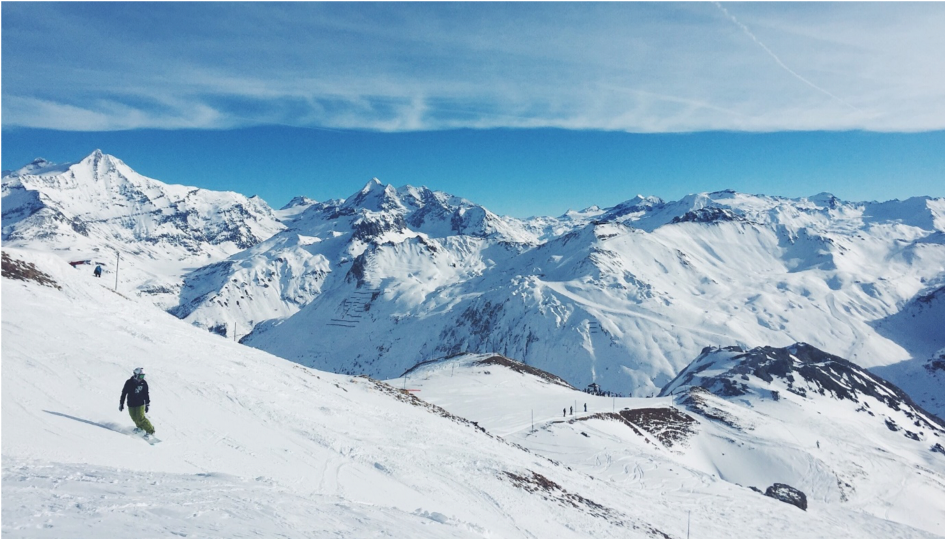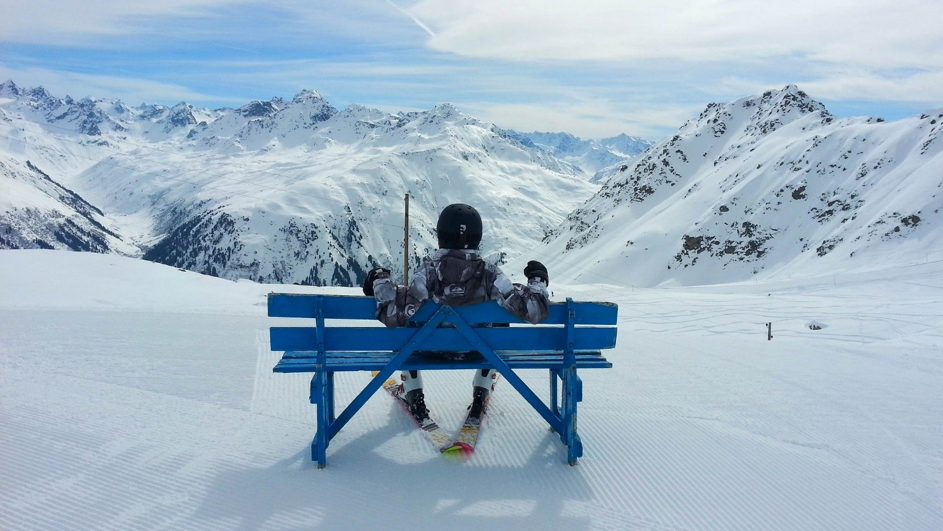January – the bellies are still full from the “Guetzli” snacking during the whole Advent season. As a New Year’s resolution and to get rid of the Christmas pounds, many Swiss people like to spend the winter months in the snow. Many foreign tourists also choose Switzerland as a winter sports destination every winter. Because in the mountains, outdoor sports in the fresh air can be perfectly combined with close contact with nature. But what effect does this have on the climate?
Winter sports tourism in Switzerland is booming: Swiss tourists as well as winter sports enthusiasts from all over the world are drawn to the more than 7000 kilometres of ski slopes, which is roughly equivalent to the distance between Berne and New Delhi. According to the Federal Statistical Office, Switzerland recorded a total of 16.7 million overnight stays in the tourist winter season from November 2018 to April 2019, a record high since the 2007/2008 winter season. During this period, the number of overnight stays by foreign tourists rose by 1% to 8.8 million and the number of Swiss overnight guests rose by 0.4% to 7.9 million.
But not all winter sportsmen and women stay overnight in the ski areas. Many come for just one day in the snow. A “ski day” is defined as a person’s day visit to a winter sports area to ski, snowboard or practice a similar winter sport. In its seasonal balance for the 2018/2019 winter season, «Seilbahnen Schweiz» (Swiss cable cars) lists a total of 24.9 million ski days. This is a growth of 6.2 percent compared to the previous season. It shows that more and more people are being attracted to the Swiss winter sports regions.
However, many winter sportsmen and women lack an awareness of the climate and environmental damage that snow sports cause. The construction of new slopes and cable cars requires forest clearance, which can lead to an increased risk of avalanches and erosion. The habitat of animals is increasingly destroyed and restricted by the many ski resorts. In addition, ski lifts, snow cannons and hotel facilities simply consume a great deal of energy and resources. Winter sports therefore leave a huge CO2 footprint in the Swiss mountain world, even though it is precisely winter sports that will suffer greatly from the consequences of climate change and is already doing so.
The size of the CO2 footprint during winter sports holidays depends on these factors:
- Means of transport for the journey
- Duration of the holidays
- Type and equipment of the ski region and accommodation
- Temperature and thus energy requirement for slope preparation
Skiers produce the largest part of their CO2 emissions when travelling to and from the mountains. It accounts for 70 – 80 percent of the CO2 emissions of skiing holidays. This seems logical, as only five percent of the approximately 40 million snow tourists travel to the ski resort by train.
But without proper climate protection in the snow regions, winter sports will soon no longer be possible. Global warming makes winters milder, we are struggling with less snowfall and our glaciers are melting, to name just a few examples.
How to make your winter sports holidays more sustainable:
- Travel to the winter sports area by public transport.
- Stay overnight in accommodations that are committed to climate protection (e.g. Swiss Youth Hostels). The environmental compatibility of your purchases (regionality), and savings in water, waste and energy are crucial. “Ibex fairstay” is the Swiss label for sustainability in the accommodation industry and awards climate-friendly accommodation.
- Choose a snow sports region that is as sustainable as possible. Here are a few examples:
Flims Laax Falera
This winter sports region in Grisons has big plans. It wants to be the first ski resort in the world to become self-sufficient and cover its entire energy requirements with renewable energy. At present, they obtain their electricity from CO2-neutral sources and all the cableways built since 2011 are equipped with photovoltaic systems. In order to do something for sustainability already today, one can make use of the e-mobility options. They offer charging stations for electric cars, and e-bikes, and the possibility of switching to the Laax E-Shuttle, which runs on 100% renewable water and solar energy. In order to preserve the flora and fauna, the Flims Laax Falera region has established protection zones for regional animals and plants.
Arosa Lenzerheide
This ski area is also aware of the considerable emissions caused by private transport to and from the ski resort. For this reason, guests with a valid Arosa Lenzerheide snow sports pass can use the PostBus and the Rhaetian Railway (2nd class) in the Arosa – Chur – Lenzerheide – Tiefencastel area free of charge. Electric cars also fill up free of charge at their charging station. To reduce energy consumption, their chairlifts control their speed depending on the number of guests. So if the speed is reduced by 10 percent, they also save 10 percent energy. Their photovoltaic systems on two chairlifts even produce the electricity for 16 residential buildings. The catering companies ensure that waste is disposed of correctly and the waste generated on the mountain itself is collected and disposed of properly.
Saas-Fee
Saas-Fee can proudly claim to have been traffic-free since 1951. This winter region is a prime example of how winter sports holidays can be enjoyed without a car. With their e-shuttle bus they focus on sustainability and comfort for winter guests. In cooperation with myclimate “Cause We Care”, guests can voluntarily co-finance climate projects with a contribution of CHF 2 when purchasing a season ticket. The Saastal Bergbahnen double the donation each time.

All of these three ski regions are part of the campaign “I AM PRO SNOW – 100% COMMITTED” by MYBLUEPLANET. The campaign is focusing on the preservation of snow sports and snow-rich winters in Switzerland. Thanks to the cooperation with winter sports resorts, winter athletes and companies, the campaign aims to completely renounce fossil energies in electricity production in the mountain world by 2030 and use purely renewable resources. As part of the campaign, the Swiss Youth Hostels have also committed themselves to the campaign and set a great example: The electricity they use today comes from 100% renewable sources.


